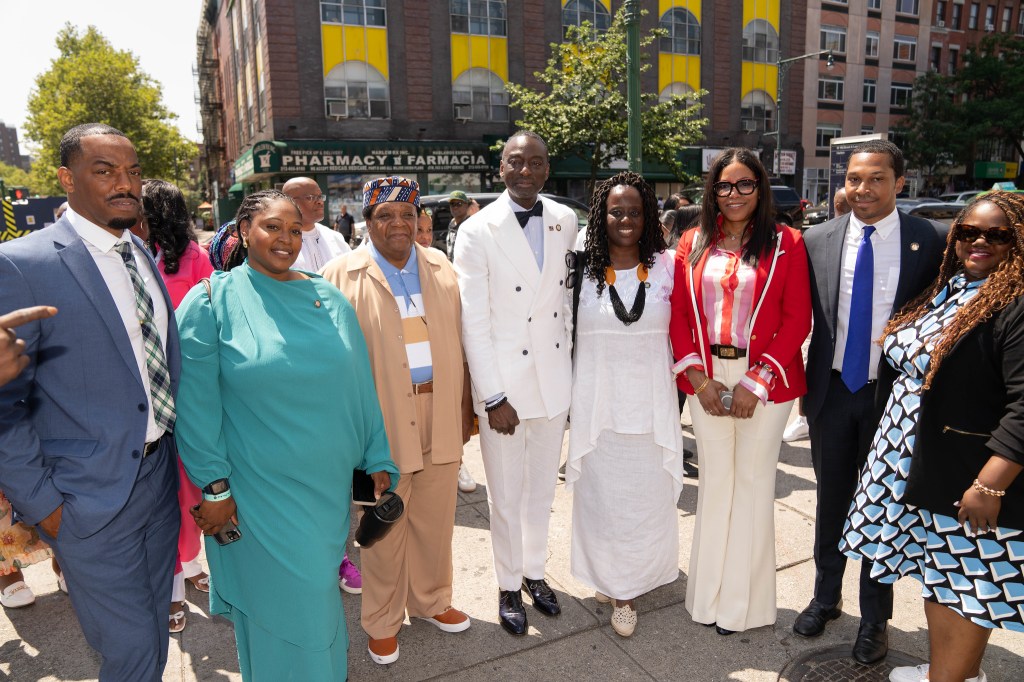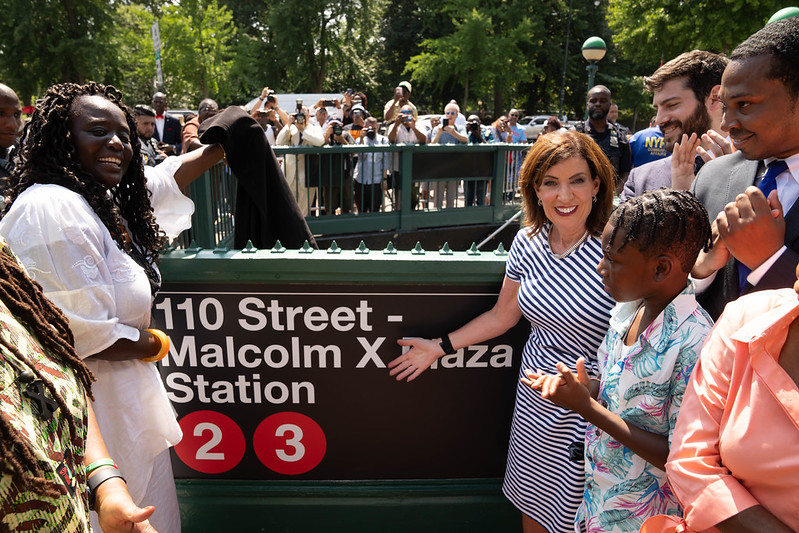On August 10, Gov. Kathy Hochul signed legislation to rename the 110th Street-Central Park North Station as the 110 Street-Malcolm X Plaza Station.
“This year’s Harlem Week also marks the 100th anniversary of the Harlem Renaissance, the period following the Great Migration when 175,000 Black residents moved to the neighborhood to escape the racism and Jim Crow laws of the South,” Hochul said in a statement.
“One of the best ways to celebrate the rich history and community of Harlem is to recognize the contributions of Malcolm X and the Harlem Renaissance to New York and to the world,” she added. “From the struggle for civil rights and equality to boundary-breaking cultural impacts of American icons like Zora Neale Hurston and Duke Ellington, Harlem has been at the center of progress in our nation for generations.”
“With a stroke of a pen, I’ve decided to designate the Harlem Renaissance Cultural District, enshrining that into law as well. All of you who fought for that got it done. We did it. We got it done.” She continued, “The district will stretch from 110th Street to 155th, from Fifth to the Hudson River, marking this as sacred ground for black art and culture and music and thought. So just like the Harlem Renaissance of the 1920s, we’re having our own.”
“Renaming this subway station as Malcolm X Plaza is more than symbolic, it’s a powerful, permanent reminder that Harlem remembers its heroes,” Yusef Salaam, Councilmember and one of the exonerated Central Park 5, said in a news release. “Every rider who passes through will encounter the name of a man who dared to speak truth to power, who demanded dignity for the oppressed, and who inspired generations to rise above adversity.”

Malcolm X–a polarizing Black nationalist leader until his assassination in 1965–sought a balance between Martin Luther King Jr.’s early pacifist approach and the violence faced by people of color in America. Born Malcolm Little, he abandoned what he called his “slave name” and became a devoted follower of Elijah Muhammad, the black separatist leader of the Nation of Islam, according to the African American Intellectual History Society.
Malcolm X lived in Harlem for over a decade, first in 1943, and then from 1954. He was shot to death in Manhattan in February 1965 by two members of the Nation of Islam while hosting a meeting for the Organization of Afro-American Unity.
Other landmarks in Harlem already bear his name, including the Malcolm Shabazz Harlem Market and the Malcolm Shabazz Plaza. Malcolm X adopted the name el-Hajj Malik el-Shabazz following his pilgrimage to Mecca.

